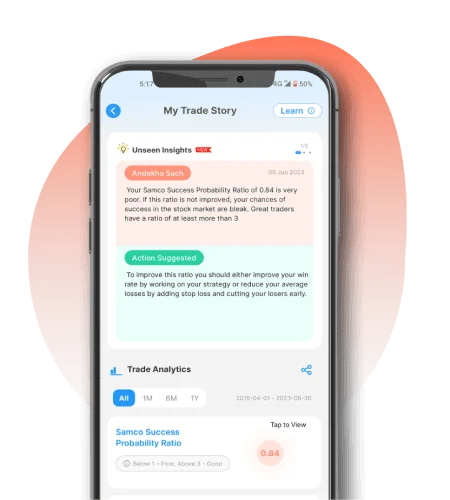Understanding Margin Money in Trading: A Complete Guide
In the fast-paced world of stock markets, the term “margin money” often surfaces when discussing trading in derivatives, leveraging, or even buying stocks with borrowed funds. For many retail investors and traders, it can be a confusing concept. However, understanding how margin money works is essential if you wish to trade beyond your available capital.
What is Margin Money?
Margin money is the minimum amount of capital that a trader must deposit with a broker to take a position in the market. It acts like a security deposit or collateral that protects the broker against potential losses on your trade. Margin enables leveraged trading, allowing you to buy or sell assets worth more than your actual account balance.
Example, if you have ₹25,000 and want to trade in a stock or index worth ₹1,00,000, your broker may allow this if you deposit a 25% margin upfront. The remaining exposure is covered by the broker, but the profits or losses you make are based on the full ₹1,00,000 — not just your initial ₹25,000. That’s the power (and risk) of leverage.
How Margin Money Works – With Example
Let’s say you want to trade in Nifty Futures, and the lot size is 50 units. If the Nifty is trading at ₹22,000, your contract value is ₹11,00,000.
If the margin requirement is 20%, you’ll only need to pay ₹2,20,000 upfront. This is your margin money.
Now, suppose Nifty rises by 200 points, and your futures contract gains ₹10,000 (50 units × ₹200). You make a solid return — not on ₹11 lakh, but on your ₹2.2 lakh margin. That’s roughly 4.5% return on margin in a single move.
But if Nifty drops by 200 points instead, you also lose ₹10,000. So while margin boosts your gains, it equally magnifies your losses.
Benefits of Using Margin
Leverage: Margin allows traders to take bigger positions than they could with just their own capital, maximizing profit potential.
Efficient Capital Use: Instead of locking full capital in one trade, you can diversify and take multiple trades using margin.
Futures & Options Access: Most F&O trades require margin money rather than full contract value, making them more accessible to retail traders.
Short Selling: Margin is essential if you want to short sell (bet against the market), as you’re essentially selling shares you don’t own.
Risks of Margin Trading
While margin can work in your favor, it’s equally risky if not managed well. Here’s why:
Amplified Losses: Just as gains are calculated on the total trade value, so are losses. A small adverse move can wipe out your margin quickly.
Margin Calls: If your losses eat into your margin amount, the broker may issue a margin call, asking you to deposit more funds. Failure to do so may lead to forced square-off.
Volatility Sensitivity: During market volatility, margins can be increased by the exchange or broker. If you can’t meet the new requirement, your trade could be liquidated.
Interest Costs: If you’re trading with borrowed funds (margin funding), you may also incur interest costs, which can eat into your profits.
Margin Money under SEBI Regulations
The Securities and Exchange Board of India (SEBI) has implemented strict guidelines to protect investors from over-leveraging and systemic risks:
Upfront Margin Requirement: As per SEBI, brokers must collect the margin before executing any trade in the cash or derivatives segment.
Peak Margin Framework: Brokers must report the highest margin used by a client during the day, and ensure it matches the required amount. Penalties apply for shortfalls.
SPAN + Exposure Margin: In F&O trades, margins are calculated based on SPAN (Standard Portfolio Analysis of Risk) — which considers worst-case loss scenarios — plus exposure margin to cover additional risk.
No Margin, No Trade: Brokers are not allowed to let clients trade without sufficient margin. This brings discipline to the market and helps avoid unexpected losses.
What is a Margin Call?
A margin call is a warning from your broker that your account value has fallen below the required maintenance margin. You’ll need to add more funds or reduce your position to meet the requirement.
If you fail to act, the broker has the right to forcefully close your position to recover losses. This can be especially dangerous during volatile markets where prices can swing rapidly.
Key Takeaways:
Margin money enables leverage — trading more than your available capital.
It is essential for F&O trading, short selling, and efficient capital deployment.
SEBI mandates strict margin rules to ensure traders don’t overexpose themselves.
Margin trading is a double-edged sword — while it can increase profits, it can also amplify losses.
Understanding margin calls, risk management, and regulatory norms is critical for success in margin-based trading.
Final Word
Margin trading can be a powerful tool for traders who understand its dynamics and manage their risk carefully. However, it’s not for everyone. If you’re new to the market or have a low risk appetite, it’s best to trade with full capital until you gain experience. Remember — in the stock market, discipline and capital protection matter more than chasing aggressive returns.








 Easy & quick
Easy & quick